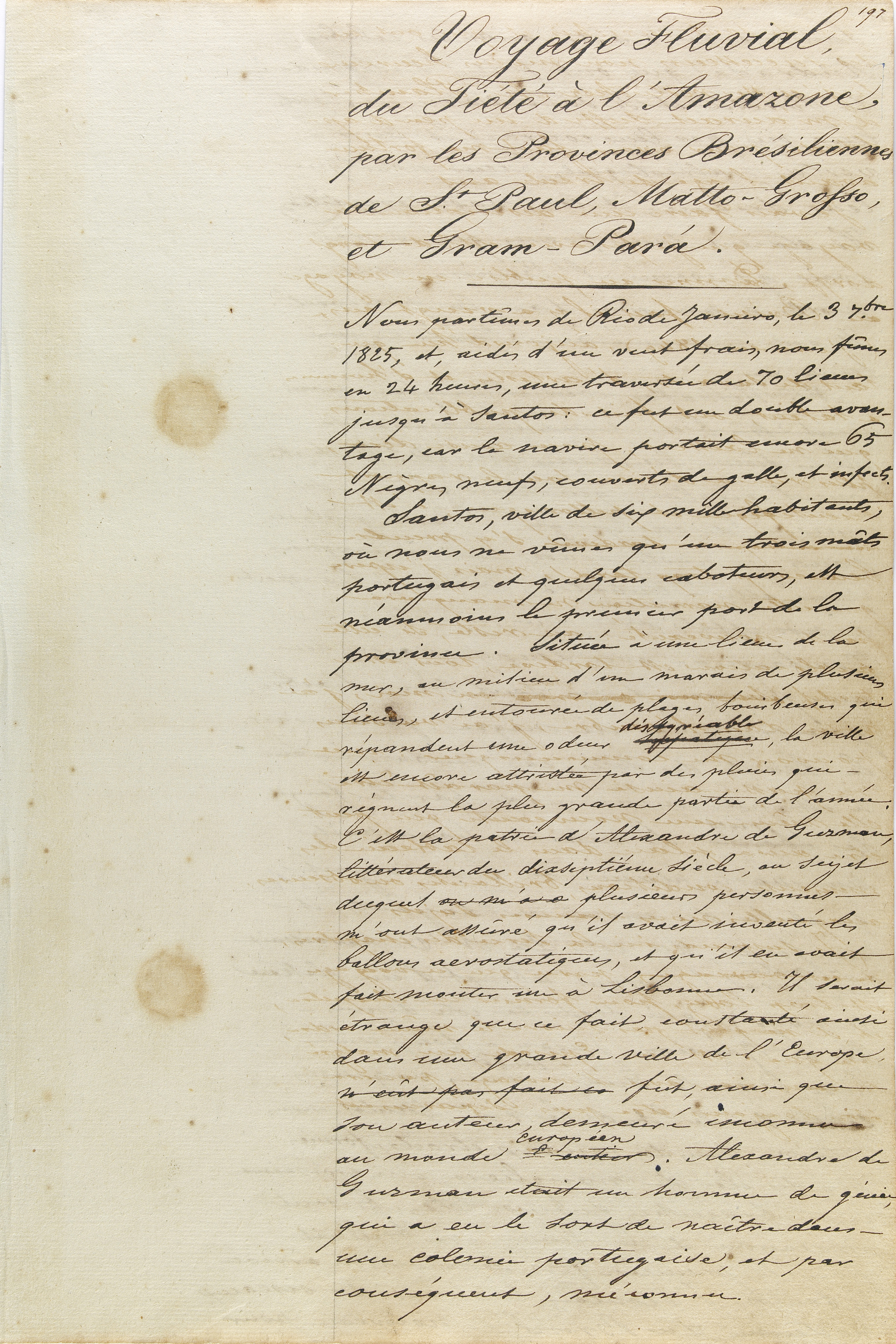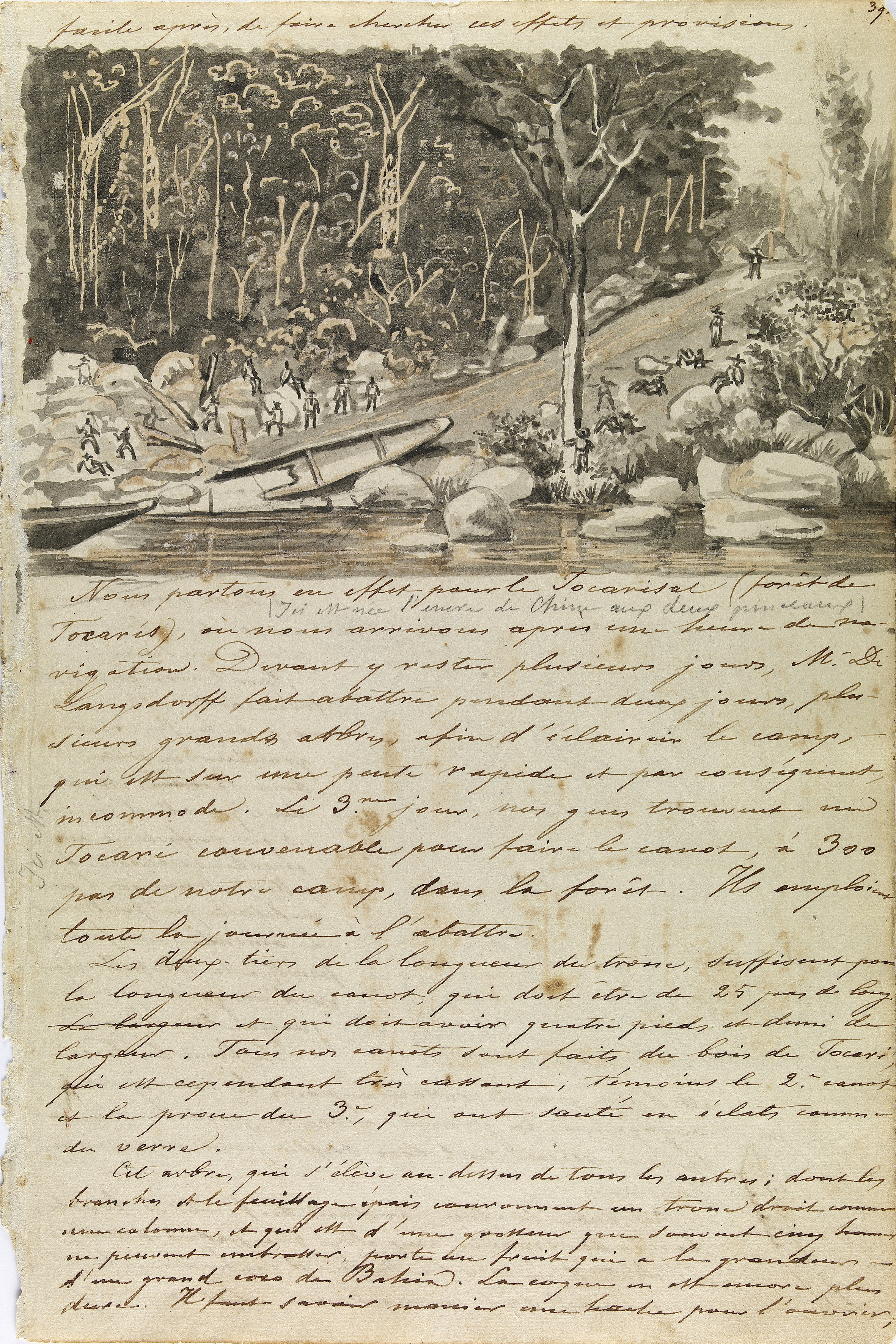The Langsdorff Expedition: Adventures of Nineteenth-Century Travelers
In their search for knowledge about the customs of the native peoples and for samples of the fauna and flora of Brazil’s hinterland, the travelers covered a total of almost 17,000 kilometers between 1821 and 1828.
“Passage of the waterfall called Misericordia and arrival the next morning at São Florêncio, one of the largest of the stops. Above, a tree-covered island divides it into two arms and ends below on a beautiful beach where we are comfortably camped.” This is how the traveling artist Hercule Florence (1804-1879) described his passage by the São Florêncio Waterfall, on the Amazon, in his book L’Ami des Arts Livré à Lui-Même [The Friend of the Arts Delivered to his own devices], a diary about his life and work, in which he also wrote about his participation as a draftsman in the Langsdorff Expedition in the section Voyage Fluvial du Tiété à l’Amazonie [River journey from the Tietê to the Amazon].

As one of the most important scientific incursions undertaken in Brazil in the 19th century, the Langsdorff Expedition was sponsored by the Russian Empire and headed by Baron Georg Heinrich von Langsdorff, a naturalized Russian doctor and German naturalist and Russian Consul in the Empire of Brazil.
The daring voyage was conducted in two stages: one overland (1821-1825) and the other by river (1825-1828), which covered more than 13,000 kilometers through the states of São Paulo, Mato Grosso do Sul, Mato Grosso, and Grão-Pará, mostly navigating the Tietê, Paraná, Paraguay, and Tapajós rivers and their tributaries.
For the first leg of the adventure, Langsdorff hired an artist, the German Johann Moritz Rugendas, as well as scientists such as botanist Ludwig Riedel, astronomer Ne'ster Rubtsov, and zoologist and linguist Édouard Ménétries.
However, constant quarrels with the head of the mission caused Rugendas to abandon the group and go his own way in the Brazilian lands. For the second leg of the trip, which left Rio de Janeiro on September 3, 1825, Rugendas was replaced by two artists: Hercule Florence and Aimé-Adrien Taunay (the son of Nicolas-Antoine Taunay).

More than 13,000 km were covered on the second leg of the journey, passing through the states of São Paulo, Mato Grosso do Sul, Mato Grosso, and Pará (mostly navigating on the Tietê, Paraná, Paraguay, and Tapajós rivers and their tributaries).
During this stretch, in January 1828, Taunay, only 25 years old, trying to swim across the Guaporé River, in the old Vila Bela (now Rondônia), was swept away by the rapids. Langsdorff did not escape unharmed either. On the banks of the Juruena River, he caught malaria and, in May 1828, began to show signs of madness.
After the travelers returned to Rio de Janeiro, Langsdorff went back to Europe. Much of the material produced during the expedition was gathered by Hercule Florence and sent to Russia. These included manuscripts, drawings, watercolors, maps, mineral species, herbaria, stuffed animals, records of indigenous languages, and correspondence. Also part of this collection are Langsdorff's diaries, which reveal details about the customs and language of tribes such as the Apiacá, Mundurucu, and Guaná, which were recorded by Florence.
The material remained forgotten in the St. Petersburg Academy of Sciences until they were discovered, by chance, a century later, in 1930. The manuscripts of Langsdorff’s diaries were translated and published for the first time in 1998.

